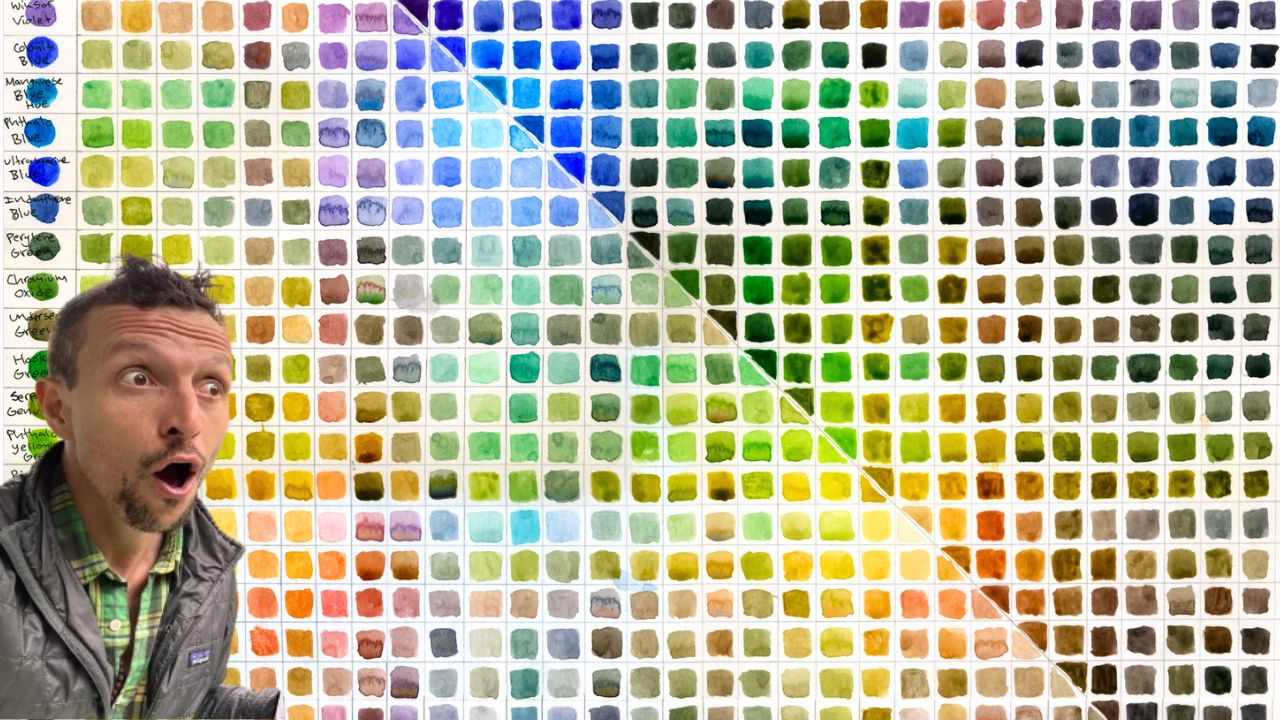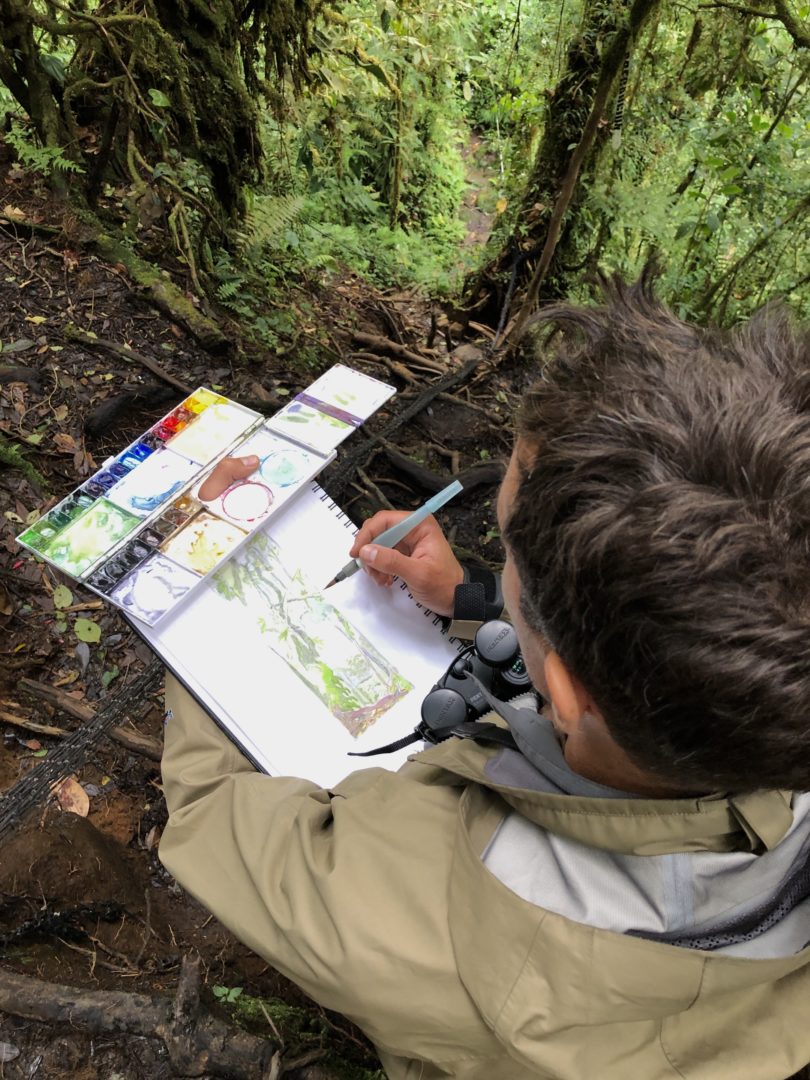
$6.74
Do you actually need expensive watercolors for nature journaling?
What is the difference between student grade and professional grade?
What are the pros and cons of cheap watercolors?
I spent the last several months experimenting with one of the cheaper watercolor palettes on the market. Don’t worry, not those Prang ones from kindergarten. I decided to try one of the student grade watercolor set by Winsor and Newton. The Cotman 14 Half Pan Field Set was my choice. Would I be disappointed by this palette after 10 years of using the high end colors in the John Muir Laws custom palette? Or would I be pleasantly surprised?
Pros and Cons of Cheap Watercolors

PROS of this watercolor set
- They only cost about $25.
- Fewer colors can be less overwhelming.
- Fewer colors can force you to learn how to mix colors.
- Less expensive can make you less precious about using them.
- The palette is compact but still has lots of mixing area.
- The palette seems pretty sturdy.
- The color range is pretty good.
CONS of this watercolor set
- The pigments are not very strong.
- There are a few gaps in the color wheel that are hard to mix from these colors.
- Fewer colors can be harder for some people. (opposite of above pro)
- Less expensive can make you value them less or less excited to use them (opposite of above pro)
- Many of the colors might not be lightfast so they fade over time.

Is a professional palette with 30+ colors too much?

I basically learned watercolor with the John Muir Laws Custom palette with 32 colors mostly from Daniel Smith. At the time, it was the most I had ever spent on an art supply at around $150 dollars (they are now $169 and have 33 colors). I have spent 1000s of hours using that palette for the last ten years. The massive range of colors provided by the palette also meant I was able to forego many other art tools.
Pros and Cons of Professional Watercolors
PROS of professional watercolors in general
- The pigments are stronger and last longer.
- If you get a palette such as the JML one with lots of colors in it you won’t have to mix as much to match colors in the field.
- It is easy to get information about the lightfastness of each pigment. (all the colors in the JML palette are lightfast).
- You can brag to all your friends and followers that you only use “professional colors.”


CONS of professional watercolors in general
- They are expensive. Depending on how you buy them and how many colors you get you could spend between $50 and $300 dollars. My first palette cost $150 and I have spent around $100 on replacement tubes, gotten some refills from friends and JML gave me a free palette when I broke one.
- If you get a lot of colors you might not learn how to mix them. (This can happen if you get a wide range of cheap colors also)
- Because the cost you might be scared to use them.
- Because you have fancy colors you might think you will magically be a better artist.
Learning to Mix Colors with Cheap Watercolors
We shouldn’t feel bad if someone tells us that we are using “Student grade” watercolor. We are all students and should be proud of that. What we should be wary of is the tendency to buy fancy things as if that is a shortcut to skill or artistry.
I think that the Cotman 14 Pan Field Set is a great way to get started with watercolor. It is affordable and accessible. It is a great palette to learn color mixing with. That is why I made a whole class on color theory and matching colors based on this palette. You can check out the class on Skillshare here. Or watch the intro to the class below. If you get this palette and take this fun class I’m sure you will become a master of color!
Do you still need more help getting started with nature journaling?
Regardless of your experience, we got you right here. Below are links to some super resources for beginner nature journalers.

2 Responses
Thanks for this comparison video. I started with a student grade cotman and then over time replaced the paint with artist grade. Thank you!
That is a really good strategy! Thanks for sharing and I recommend that others reading this try this approach. As you finish individual colors you can try replacing them with higher quality colors.